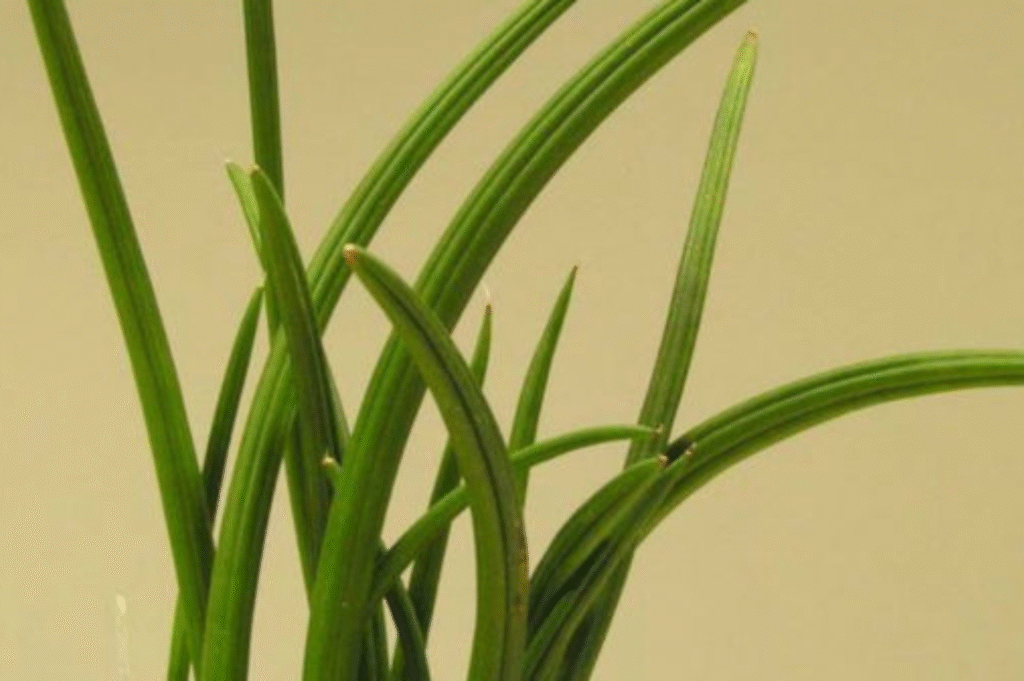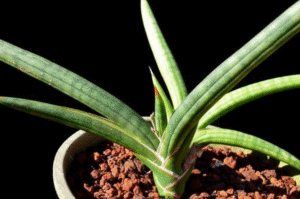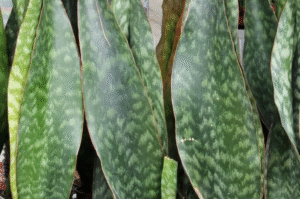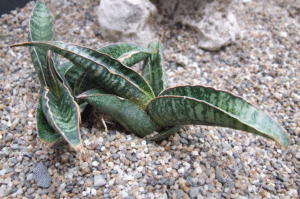Sansevieria canaliculata, a rare and elegant variety of snake plant, stands out for its cylindrical, channel-like leaves that grow upright and in pairs. Native to Madagascar, this succulent species is not only striking in appearance but also remarkably hardy, making it a fantastic choice for both indoor plant collectors and minimalist decorators. If you’re looking to add a touch of green sophistication to your space with minimal maintenance, this plant deserves a spot in your home.
In this detailed care guide, we’ll walk you through everything from planting to long-term care, ensuring your Sansevieria canaliculata thrives in any setting.
Plant Profile: Sansevieria canaliculata at a Glance
| Feature | Details |
| Botanical Name | Sansevieria canaliculata |
| Common Name | Canal Snake Plant |
| Plant Type | Succulent, perennial |
| Light Requirement | Bright indirect to filtered sunlight |
| Water Needs | Low (drought-tolerant) |
| Growth Habit | Upright, paired cylindrical leaves |
| Mature Height | 1–2 feet (30–60 cm) |
| Toxicity | Toxic to pets if ingested |
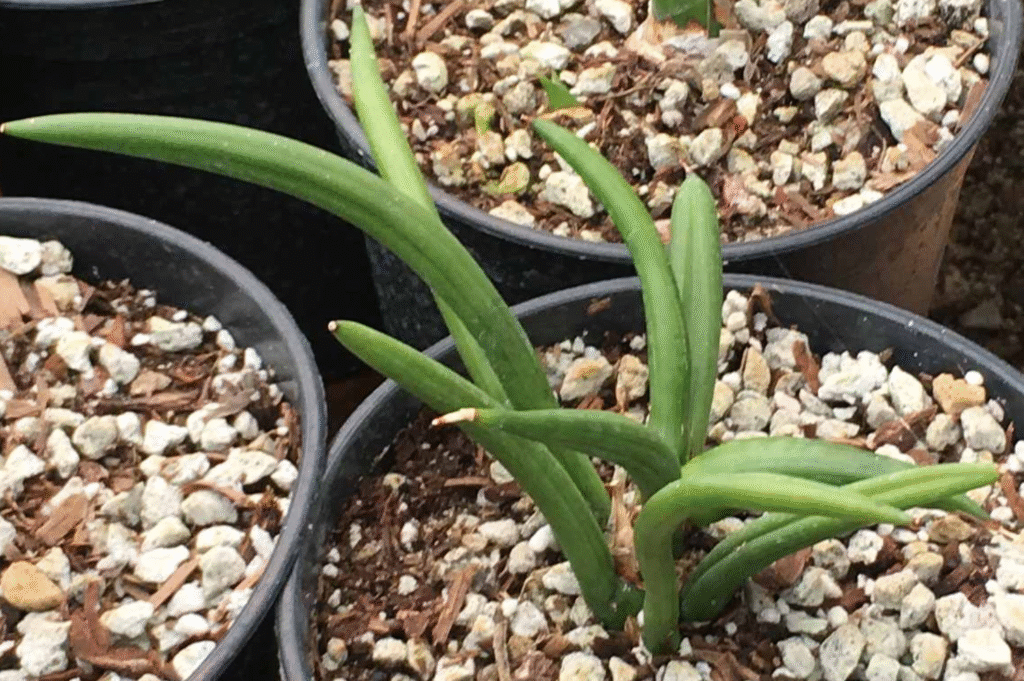
Why Choose Sansevieria canaliculata?
Unlike other common snake plants, Sansevieria canaliculata offers a sculptural aesthetic with its unique V-shaped or grooved cylindrical leaves. The plant grows slowly and stays compact, making it perfect for desktops, windowsills, and decorative planters.
Key benefits include:
- Air-purifying capabilities
- Highly drought-tolerant
- Thrives on neglect
- Architectural look for modern interiors
Planting Sansevieria canaliculata
1. Choosing the Right Pot
Start with a well-draining pot, ideally terracotta or ceramic with a drainage hole. This plant is susceptible to root rot, so excess moisture must be avoided.
Recommended Pot Features:
- At least 5–6 inches in depth
- Good drainage system
- Breathable material (clay, terracotta)
2. Ideal Soil Mix
Use a cactus or succulent potting mix. You can also make your blend by mixing:
- 2 parts coarse sand or perlite
- 2 parts potting soil
- 1 part pumice or orchid bark for aeration
Avoid heavy or clay-based soils that retain water.
3. How to Plant It
- Gently remove the plant from its nursery pot.
- Loosen any compacted roots and remove old soil.
- Place the plant in the center of the new pot.
- Fill around it with the prepared soil, leaving about 1 inch of space from the rim.
- Lightly pat down the soil and water once.
Growing Conditions for Healthy Development
1. Light Requirements
Sansevieria canaliculata prefers bright, indirect sunlight. It can tolerate some direct sun and even low-light conditions, though growth may slow down.
Best Locations:
- East or west-facing windows
- Rooms with filtered sunlight
- Avoid placing in full shade or dark corners
2. Temperature & Humidity
This species prefers warm temperatures between 65°F and 85°F (18 °C–29°C). Avoid exposing it to frost or temperatures below 50°F (10°C). It adapts well to average indoor humidity.
Tip: In winter, move it away from drafty windows or heaters.
Watering Schedule
The most common mistake with snake plants? Overwatering.
Here’s a seasonal breakdown:
- Spring/Summer: Water every 2–3 weeks when the top 1–2 inches of soil is dry.
- Fall/Winter: Water only once a month or less.
Always let the soil dry out between waterings. Use the “soak and dry” method: water thoroughly, then allow all excess to drain.
Signs of overwatering:
- Mushy, yellow leaves
- Foul odor from the soil
- Root rot
Fertilizing Routine
While Sansevieria canaliculata doesn’t need heavy feeding, occasional fertilization boosts growth and leaf health.
Use a balanced liquid fertilizer (like 10-10-10) diluted to half strength:
- Spring to early fall: Feed once every 6–8 weeks.
- Winter: No fertilization required.
Avoid over-fertilizing, which can burn the roots and damage the foliage.
Repotting Tips
Being a slow grower, this plant doesn’t need frequent repotting. Repot every 2–3 years, or when:
- Roots are circling the pot
- The plant becomes top-heavy
- Soil is compacted or depleted
Best time to repot: Early spring before new growth starts.
Propagation Methods
If you love your Sansevieria canaliculata, you can easily propagate it. Here are the best methods:
1. Division
- Remove the plant from its pot and gently separate the rhizomes.
- Each division should have at least 2–3 leaves and roots attached.
- Replant in separate pots with fresh soil.
2. Rhizome Cuttings
- Cut a healthy rhizome (horizontal stem under the soil) into sections.
- Let them callous for a day or two.
- Plant shallowly in dry soil and water sparingly.
Note: Leaf cuttings may not work well with this specific Sansevieria variety due to its growth habit.
Common Problems and Solutions
| Problem | Cause | Solution |
| Yellowing leaves | Overwatering | Reduce watering, check drainage |
| Mushy base | Root rot | Remove affected roots, repot in dry soil |
| Curling leaves | Underwatering or cold | Increase watering or move to a warmer spot |
| Brown tips | Low humidity or salt buildup | Use filtered water, trim tips |
Seasonal Care Guide
Spring
- Resume watering and fertilization
- Repot if needed
- Encourage new growth
Summer
- Maintain regular care
- Avoid extreme sun exposure
Fall
- Reduce watering
- Stop fertilizing
Winter
- Let the plant rest
- Keep in a warm, draft-free area
Decorative Uses
Sansevieria canaliculata is more than just a plant; it’s a design statement. Its upright, minimalistic structure pairs well with:
- Modern, Scandinavian, or minimalist interiors
- Zen-inspired corners
- Office desks and entryway tables
Use geometric planters or elevate them with a decorative stand for a stylish look.
Final Thoughts
Sansevieria canaliculata is a low-maintenance, visually captivating succulent that effortlessly fits into modern lifestyles. Its sculptural form, resilience, and air-purifying benefits make it an ideal companion for plant lovers of all levels. Whether you’re a seasoned collector or a beginner looking for a stylish houseplant, this rare snake plant species is worth the investment.
Care for it properly, and this green beauty will reward you with years of hardy elegance.

